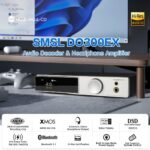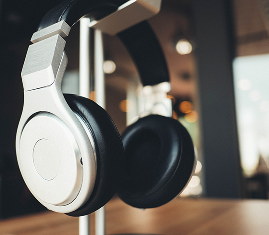Picture this: you’re sitting at a cozy wine bar, sipping on a glass of your favorite wine. As the fragrant notes dance on your palate, you can’t help but notice the gentle melodies floating through the air. It seems like the music and the wine are in perfect harmony, enhancing each other’s flavors and creating a multisensory experience. This intriguing relationship between music and wine tasting has captured the attention of researchers and wine enthusiasts alike. In this article, we will explore the fascinating connection between music and wine tasting and uncover how your choice of music can elevate your wine-drinking experience to new heights.
Understanding the Role of Music in Wine Tasting
The traditional aspects of wine tasting
Wine tasting is a sensory experience that has been celebrated for centuries. It involves examining the appearance, aroma, taste, and overall quality of different wines. Traditionally, wine tastings have focused solely on the wine itself, with experts evaluating factors such as acidity, tannins, and flavor profiles. However, in recent years, there has been an increasing interest in the role that music can play in enhancing the wine tasting experience.
How music influences our wine tasting experience
Music has the incredible ability to evoke emotions and influence our perception of the world around us. When it comes to wine tasting, the right music can enhance the flavors and aromas of the wine, creating a more enjoyable and immersive experience. Research has shown that certain types of music can enhance the perception of sweetness, while others can highlight specific flavors or create a particular ambiance. By carefully selecting the right music, wine professionals and enthusiasts can elevate the tasting experience to new heights.
Music as an integral part of themed tasting events
Music can also play a crucial role in themed tasting events, where specific genres or styles of music are chosen to complement the wines being tasted. For example, a French wine tasting event may feature French music, while a tasting of bold and robust wines may be accompanied by energetic and powerful music. These themed events not only enhance the overall experience but also create a deeper connection between the wine and the cultural context in which it is produced.
Musical Notes and Wine Flavors: The Synesthesia Element
Defining synesthesia in wine tasting
Synesthesia is a phenomenon where the stimulation of one sensory or cognitive pathway leads to the involuntary experience of another sensory or cognitive pathway. In the context of wine tasting, synesthesia occurs when the perception of the wine’s flavors and aromas is influenced by the sensory experience of music. This cross-sensory perception adds an extra layer of complexity and enjoyment to the tasting experience, bringing together two art forms in a beautiful harmony.
How synesthesia applies to wine and music
Just as different wines have their distinct flavors and characteristics, different musical notes and chords have their unique sound profiles and emotional impacts. When wines and music are paired in a synesthetic tasting, the overlapping characteristics and qualities can create a rich sensory experience. For example, a light and crisp white wine may be paired with a lively and uplifting piece of classical music, enhancing the freshness and vibrancy of the wine.
The commonalities between wine notes and musical notes
Both wine and music have notes that can be described and analyzed. In wine, notes refer to the various flavors and aromas that can be detected in the wine, such as citrus, blackberry, or oak. Similarly, in music, notes refer to the individual pitches or tones that make up a melody or harmony. The commonalities between wine notes and musical notes provide a fascinating connection between the two realms and open up possibilities for aligning them in a way that enhances the tasting experience.
Scientific Aspects Behind Music and Wine Pairings
How our brain processes wine and music
The connection between music and wine goes beyond artistic appreciation; it is deeply rooted in the way our brain processes sensory information. When we taste wine, our brain analyzes various factors such as taste, aroma, and texture to create an overall perception. Likewise, when we listen to music, our brain processes the intricate sounds and rhythms to evoke emotions and create a mental image. The parallel processing of these stimuli in our brain allows for the integration of music and wine, resulting in a more holistic and immersive experience.
The influence of mood and emotions in pairing
Our emotional state and mood can significantly influence our perception of both wine and music. The scientific field of psychophysics explores the relationship between psychological factors and sensory perception. By carefully selecting music that aligns with the desired mood or emotional intent of a wine tasting, one can create a more harmonious and enjoyable experience. For example, pairing a mellow and introspective wine with calming classical music can enhance the contemplative nature of the tasting.
The psychological perspectives in tasting and hearing
Psychology plays a crucial role in shaping our perception of the world, and this includes both tasting and hearing experiences. The concept of cross-modal perception suggests that our brains can integrate information from different senses and combine them into a unified experience. In the context of wine tasting, playing specific genres of music can evoke certain expectations and associations that influence how we perceive the wine. This psychological perspective further emphasizes the importance of selecting the right music to enhance the tasting experience.
The Influence of Music Genre on Perception of Wine
Effects of various music genres on wine perception
Different music genres evoke different emotions, attitudes, and moods. When it comes to wine tasting, the choice of music genre can significantly impact the perception of the wine. For example, playing classical music during a tasting can create an elegant and refined atmosphere, accentuating the sophistication of the wine. On the other hand, playing upbeat and energetic music can enhance the perception of freshness and liveliness in lighter wines. The selection of music genre requires careful consideration to align with the desired taste experience.
Experimental case studies
Numerous experimental case studies have been conducted to explore the relationship between music and wine perception. These studies involve participants tasting wines while listening to different genres of music and evaluating their experience. The results have shown that certain music genres can enhance specific attributes of wine, such as sweetness, acidity, or complexity. This scientific approach helps to validate the impact of music on wine perception and provides valuable insights for creating meaningful pairings.
Public opinion on music and wine pairings
Beyond scientific research, public opinion and anecdotal experiences also shed light on the influence of music on wine tasting. Many wine enthusiasts and professionals have shared their personal experiences with music and wine pairings, highlighting the transformative effect it can have on the tasting experience. The positive response from the public further fuels the exploration and integration of music into wine tastings, enabling a wider audience to enjoy and appreciate the sensory interaction.
How Music Intensity Can Affect Wine Attributes
The correlation between loud music and stronger wine flavors
The intensity of music, particularly the volume and beat, can have a significant impact on our sensory perception. Studies have shown that louder and more intense music can influence the perception of wine attributes, making the flavors appear more robust and pronounced. This correlation between music intensity and wine attributes suggests that the auditory stimulus can modulate our taste perception, creating a more robust and immersive tasting experience.
Low-level music and its impact on nuanced wine attributes
On the other hand, low-level music has been found to enhance the perception of subtle and nuanced wine attributes. Soft and delicate music can create a gentle and tranquil ambiance, allowing the taster to focus on the intricate flavors and aromas of the wine. This approach is particularly suitable for tastings of delicate or complex wines where the goal is to appreciate the subtle nuances and layers of flavors.
Volume, beat, and their effects on our senses
The volume and beat of music play a crucial role in shaping our sensory experience. Higher volumes and faster beats can create a more dynamic and intense environment, stimulating the senses and intensifying the overall tasting experience. Alternatively, lower volumes and slower beats can create a relaxed and calming ambiance, enabling tasters to focus on the intricate details of the wine. By carefully considering the volume and beat of the music, wine professionals can tailor the tasting experience to match the desired sensory impact.
The Art of Perfect Wine and Music Pairings
Understanding wine varietals and their musical counterparts
To create the perfect wine and music pairing, one must delve into the characteristics of different wine varietals and their musical counterparts. Just as certain wines have their distinct flavors, aromas, and characteristics, different genres, artists, or specific musical compositions can mirror these attributes. For instance, a bold and powerful Cabernet Sauvignon may be best paired with a piece of symphonic music that shares its intensity and complexity. Understanding the inherent qualities of both wine and music allows for a more thoughtful and artful pairing.
How to create the perfect pairing for a wine tasting event
Creating the perfect wine and music pairing requires careful consideration and experimentation. Firstly, the desired taste experience should be identified. Whether it is a focus on acidity, sweetness, or complexity, this understanding becomes the guiding principle for selecting the appropriate music. Next, the characteristics of specific wine varietals or styles should be analyzed, allowing for the identification of musical counterparts that can enhance those attributes. Finally, the selected music should be tested alongside the wines to ensure a harmonious and immersive tasting experience.
Examples of successful wine and music pairings
Many wine tastings around the world have successfully incorporated music into their events, resulting in memorable and enjoyable experiences. For example, a tasting of Italian red wines may be accompanied by classic Italian opera music, evoking the rich cultural heritage of the wines. Similarly, a tasting of sparkling wines can be complemented by energetic and upbeat music, creating a festive and celebratory atmosphere. These examples demonstrate the power of music to enhance the tasting experience and create a deeper connection between wine and culture.
Exploring Case Studies of Wine Tastings with Music
Prominent tastings where music has been pivotal
Several high-profile wine tastings have been conducted where music played an instrumental role in shaping the experience. These tastings often involve collaborations between renowned musicians and winemakers, resulting in unique and immersive events. From classical concerts paired with fine wines to outdoor festivals where music and wine come together, these tastings showcase the transformative power of music in enhancing the appreciation of wine.
Analyzing the results of such tastings
The results of these tastings have been overwhelmingly positive, with participants reporting enhanced sensory experiences and a deeper connection with the wines. The carefully curated pairings of music and wine have elevated the tasting experience, allowing participants to explore the complexities and nuances of the wines in a more engaging and enjoyable manner. The success of these tastings further emphasizes the potential for music to revolutionize the way we approach wine appreciation.
Conclusions drawn from these case studies
The case studies of wine tastings with music provide valuable insights into the relationship between the two art forms. They demonstrate that the integration of music into wine tastings can enhance sensory perception, evoke emotions, and create a more immersive and memorable experience. The positive feedback and enthusiastic response from participants highlight the transformative effect that music has on the enjoyment and appreciation of wine.
Impact of Music on the Business of Wine Tasting
How music has reinvented wine tastings
The inclusion of music in wine tastings has redefined the traditional approach to wine appreciation. It has introduced a new layer of sensory stimulation, allowing participants to engage with the wine on a deeper level. This reinvention of wine tastings has attracted a broader audience and sparked renewed interest in the world of wine, making it a more accessible and enjoyable experience for all.
The marketing perspective: Customers’ response
From a marketing perspective, the integration of music in wine tastings has proven to be highly effective. It has helped create unique selling points for wineries and tasting events, attracting customers who are looking for a more immersive and engaging experience. The positive response from customers, as evidenced by increased attendance and positive reviews, further validates the impact of music on the business of wine tasting.
The evolution of wine tastings due to music inclusion
The inclusion of music has brought about an evolution in the wine tasting industry. It has prompted wineries, tasting rooms, and event organizers to think creatively and outside the box, offering unique and memorable experiences to their customers. This evolution has also fostered collaborations between artists and winemakers, creating synergistic partnerships that celebrate the intersection of wine and music.
Wine Tasting Etiquette and Music
Etiquette of playing music during tastings
When incorporating music into wine tastings, it is essential to consider the etiquette surrounding its presence. The volume of the music should be adjusted to ensure it enhances the tasting experience without overpowering or distracting from the wine. The music should also be appropriate for the occasion and the theme of the tasting, aligning with the desired mood and taste experience.
Respect for different opinions on music in tastings
As with any sensory experience, personal preferences and opinions on music can vary widely. It is crucial to respect and accommodate the diverse tastes and opinions of participants during a wine tasting. This can be achieved by providing a variety of musical options or creating a flexible environment where participants can select their preferred genre or style of music. Flexibility and inclusivity are key to ensuring that music enhances rather than detracts from the wine tasting experience.
Ensuring music does not overwhelm the wine tasting experience
While music can add depth and richness to a wine tasting, it is important to ensure that it does not overshadow or overwhelm the main focus – the wine itself. The music should complement and enhance the sensory experience of the wine, rather than distract from it. Careful attention should be paid to the balance between music and wine, allowing participants to fully appreciate the intricate flavors, aromas, and characteristics of the wines being tasted.
Future of Music and Wine Tasting Relationship
Possible future research on the relationship
The relationship between music and wine tasting continues to be an area of interest for researchers and enthusiasts alike. Future research could delve deeper into the specific mechanisms by which music influences taste perception and sensory experience. Additionally, the exploration of new technologies, such as virtual reality or immersive soundscapes, could further enhance the integration of music into wine tastings, creating even more immersive and transformative experiences.
Predicted advancements in wine tastings with the help of music
As technology and knowledge continue to progress, the potential advancements in the field of wine tastings with the help of music are vast. Adaptive music systems that respond to the changing flavors and characteristics of wine could be developed, creating dynamic and personalized tasting experiences. Furthermore, advances in sensory neuroscience could provide valuable insights into the physiological and neurological effects of music on taste perception, aiding in the creation of more precise and effective pairings.
How music can be further used to enhance tastings
The incorporation of music into wine tastings is still an evolving field. There are endless possibilities for using music to enhance tastings further. From incorporating live music performances to designing multi-sensory experiences that engage all the senses, the potential for music to create memorable and transformative wine tastings is immense. By continually exploring and pushing the boundaries of the relationship between music and wine, the future holds exciting prospects for wine enthusiasts and professionals alike.
In conclusion, the relationship between music and wine tasting is a fascinating and ever-expanding realm. From enhancing sensory perception to creating immersive experiences, music has the power to elevate the enjoyment and appreciation of wine. Through careful consideration of music genre, intensity, and pairing, wine tastings can be transformed into captivating and memorable events. As the field continues to evolve and advance, the integration of music into wine tastings holds immense potential for further enhancing the sensory experience and deepening our understanding and love for both wine and music.










